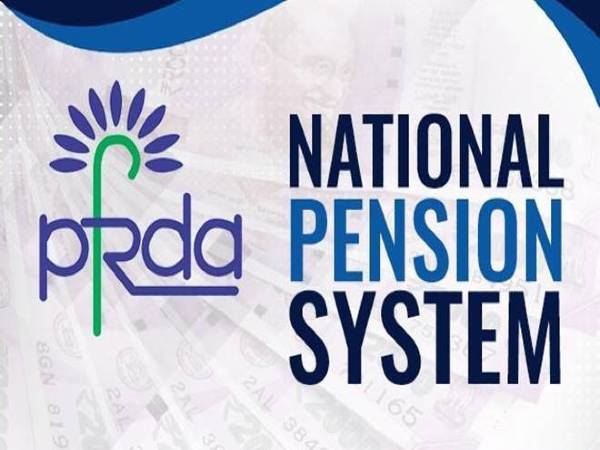PPF vs NPS: Where Senior Citizens Should Invest In Terms Of Returns?
An incredibly important financial priority is planning for your retirement. For limited but regular long-term investments, the safest way to prepare for retirement is to bet on the National Pension System (NPS) or the Public Provident Fund (PPF). The Public Provident Fund (PPF) plays a very important role when it comes to creating retirement wealth. PPF promises guaranteed returns over the long term and for all types of age groups which makes it the best among others. However, as a mechanism to make retirement savings, the National Pension Scheme or NPS is widely known among the regular income earners. The National Pension System is a pension initiative funded by the government and is available to public, private and unorganized employees. But taking both into considerations which can be a good bet for senior citizens in order to reap good returns. Let's compare both in detail and pick the best one for you as a senior citizen.

Eligibility
In order to join NPS government employees, private employees, senior citizens who have taken voluntary retirement are allowed to make contributions. In order to open an NPS account, one must fall under the age limit of 18 years and 65 years respectively. A PPF can be opened by any Indian resident. If the second account is in the name of a minor, one individual with no age limit can have just one PPF account. There is no eligibility for NRIs and HUFs to open a PPF account.

PPF Returns
PPF provides you with a fixed interest rate that is adjusted every quarter which is determined by a board on the basis of adjustments in government bond yields. Among government-backed investment opportunities, PPF is considered to be the best and secure for the higher returns. For the quarter ending March 31, 2021, the current PPF interest rate is 7,1 per cent. Check out the historical returns of PPF below:
| FY | Quarter | ROI per annum |
|---|---|---|
| 2020-2021 | April 2020 - June 2020 | 7.10% |
| 2019-2020 | January 2020 - March 2020 | 7.90% |
| 2019-2020 | October 2019 - December 2019 | 7.90% |
| 2019-2020 | July 2019 - September 2019 | 7.90% |
| 2019-2020 | April 2019 - June 2019 | 8.00% |
| 2018-2019 | January 2019 - March 2019 | 8.00% |
| 2018-2019 | October 2018 - December 2018 | 8.00% |
| 2018-2019 | July 2018 - September 2018 | 8.00% |
| 2018-2019 | April 2018 - June 2018 | 7.60% |
| 2017-2018 | January 2018 - March 2018 | 7.60% |
| 2017-2018 | October 2017 - December 2017 | 7.80% |
| 2017-2018 | July 2017 - September 2017 | 7.80% |
| 2017-2018 | April 2017 - June 2017 | 7.90% |
| 2016-2017 | October 2016 - March 2017 | 8.00% |
| 2016-2017 | April 2016 - September 2016 | 8.10% |
| 2015-2016 | April 2015 - March 2016 | 8.70% |
| 2014-2015 | April 2014 - March 2015 | 8.70% |
| 2013-2014 | April 2013 - March 2014 | 8.70% |
| 2012-2013 | April 2012 - March 2013 | 8.80% |
| 2011-2012 | April 2011 - November 2011 | 8.00% |
| 2011-2012 | December 2011 - March 2012 | 8.60% |
| 2010-2011 | April 2010 - March 2011 | 8.00% |
| 2009-2010 | April 2009 - March 2010 | 8.00% |
| 2008-2009 | April 2008 - March 2009 | 8.00% |
| 2007-2008 | April 2007 - March 2008 | 8.00% |
| 2006-2007 | April 2006 - March 2007 | 8.00% |
| 2005-2006 | April 2005 - March 2006 | 8.00% |
| 2004-2005 | April 2004 - March 2005 | 8.00% |

NPS Returns
The return on your NPS investment is not guaranteed, since these are market-linked investments. Under NPS get the option of investing in a blend of equities, corporate bonds and government securities to benefit from higher returns. NPS returns are entirely market-based and based on the performance of your investment manager and asset that you have selected. In the past year, Scheme E (which primarily invests in equities) under the NPS Tier I Account delivered an average return of 23%. Over the past year, all pension fund managers in Scheme E of NPS have provided more than 20 per cent returns. In the last five years, the average return of NPS Scheme E settled around 15%, whereas the 10-year return settled around 11%. Returns under the NPS debt schemes have dropped from a peak of around 14% to around 11.2% and 10% respectively under Scheme C and Scheme G. (Source: NPS Trust).

Maturity period
PPF account comes with a maturity period of 15 years which further can be extended to a block of 5 years. One can invest in NPS up to an age of 60 years since it is a retirement scheme or fund. And even one can keep the account active up to the age of 70.

Minimum and maximum deposit limit
You have to invest a minimum of Rs 500 in PPF, while the cumulative contribution in any given financial year is capped at Rs 1.5 lakhs. The account is considered as 'inactive' if one fails to contribute the minimum deposit amount. The minimum contribution required when it comes to NPS is Rs. 6.000. Whether employed with the state government or the central government excluding the Armed Forces, all govt employees can contribute 10 per cent of the basic salary plus dearness allowance towards NPS. This contribution is the same for private employees and voluntary contributions in NPS by self-employed.

Interest payout
In case of PPF you get the entire contribution and the accumulated return after the 15-year period as a lump-sum. Whereas under NPS you must invest at least 40 per cent of your accumulated corpus at the time of retirement in buying an annuity policy that offers regular income and the rest 60% of the corpus can be withdrawn as a lump sum.

Security in terms of risk
PPF is a retirement scheme backed by the government and thus carries a low-risk level and provides guaranteed returns. Whereas NPS operated by the NPS Trust, administered by the government-run pension fund regulator, PFRDA. Public and private fund management companies authorized by PFRDA administer the investments that are deposited by NPS subscribers. Since fund management is only accessible to fund managers, PFRDA controls them closely and frequently tracks them. So, it would have market-driven risks when it relates to the security of your investment in NPS.

Taxation
In each financial year, both PPF and NPS provide you with tax deduction benefits of Rs 1.5 lakh. By investing up to a limit of Rs 1.5 lakh one can get tax-free income at the time of maturity. NPS provides you with an additional deduction of Rs 50, 000 under section 80CCD(1B) over and above the Rs 1.5 lakh contribution under section 80CCD1. So you will ultimately get a deduction of Rs 2 lakh per year under NPS. Under NPS, up to 60% of the retirement corpus you receive is completely tax-free, but the annuity benefit you receive monthly is taxable.

Our take
The most prominent retirement based schemes are both the Public Provident Fund (PPF) and the National Pension System (NPS). That being said, the PPF account allows an investor to gain an exemption from income tax on investment of up to Rs 1.5 lakh in a fiscal year and, at the same time, allows investors to cherish a tax deduction on the maturity amount (including interest). Although the taxpayer can claim a tax deduction under the NPS on investment of up to Rs 1.5 lakh in a fiscal year the purchased annuity policy i.e. of 40% is not tax-free. Consequently, like the PPF, the NPS Scheme is not 100 per cent tax-free. Although, also, if someone's risk tolerance is moderately higher, then NPS can be a good bet here. Although PPF provides the best returns in the classification of fixed income, in the long run, NPS has provided double-digit returns if we compare it with the historical returns of PPF as mentioned in the above table. But NPS has a major drawback if we consider the maturity benefit as one can not withdraw the entire corpus and is mandated to purchase an annuity policy. At present, the PPF interest rate is 7.1 per cent which is much higher than bank FDs. Depending on the risk appetite of the investors PPF can be a good bet here if someone is not ready to welcome market-based returns into his or her portfolio. If anyone, though, has a strong risk appetite and a higher tax slab limit, then instead of a PPF account, a market-linked return and risk-oriented scheme i.e. NPS can be a good bet.
































